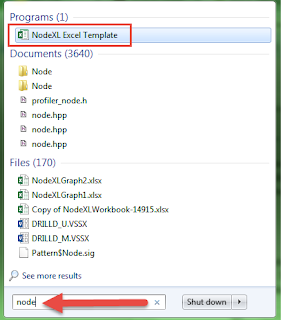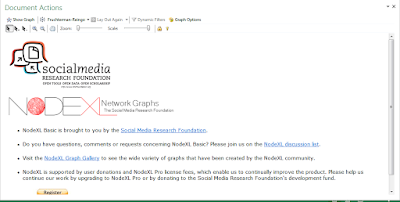Introduction
The Matrix trilogy is by far, one of my favourite, all time
movies' series. The themes that are discussed and potraited especially
make it a remarkable movie. If your in Computer Science, the movie
resonates even more with you. In this post, I will be discussing the
issue of The One. Many say that The One is Neo. It is even in his
name. A clever anagram of the words "one". Neo has thought of as being
The One. I beg to differ.
Some even claim that The One
is Smith. The overbearing agent who cheated death and took over the
Matrix. Most claim that it is he, who is truly the one. Again, I beg to
differ with these assertions. In this post, I will reveal who I think is
The One but I will also discuss Neo being The One as well as Smith
being The One and then at the end, I will reveal who The One is. This is
my opinion and is based on what I have seen. So if you disagree, the
comments section is the place to discuss this.
Neo As The One
From the first movie, it has been thought that Neo is The One. I
mean, he is the star of the movie after all. The Matrix movies,
however, are based on the story of Jesus Christ. So if Neo is Jesus,
then where is John the Baptist. You cannot claim that Morpheus is John
either.
In the first movie, the Oracle even tells him
that he is not The One. Although she told Trinity that she would fall in
love with The One, that was the only characteristics that Neo abides
by. Even that, a girl with a crush could have misunderstood the Oracle's
message. It is only human to misunderstand messages.
An important thing to note as well, is when Morpheus said that when the Matrix was first created, there was a man
born in it who was not
constrained by the makings of the Matrix. He could
change anything
he wanted in the Matrix. Where in the whole Matrix series has Neo ever
changed anything. He can fly, beat a few agents and is faster and
stronger but that is about it. There is nothing he changes in the
Matrix.
It is why, in my opinion, that I declare Neo as
the John the Baptist character in the series. Like many in biblical
times who thought that John was the messiah, in this case, Neo fits that
label. Although, I think initially, the Wachowaski Brothers (Creators
of the movies) made him The One. I doubt they thought that they would
actually make a trilogy. With the trilogy, new ideas must have emerged
including the all powerful, ultra cool, Smith virus.
Smith As The One
I am sure many of you are
perplexed
by this. Well, don't be. You are probably asking yourself how could the
enemy actually be the hero of the story? Well, I did not say he was the
hero knowingly, I just said that many in the dark, world wide web
believe he is The One. Here are some of the reasons for this.
As mentioned in the Morpheus quote in the Neo part, a man who was
born in the Matrix. Neo
was not born in the Matrix but Smith was. As long as there has been a
Matrix, Smith has always been there. He even mentions this in the first
movie whereby he tells Morpheus that the first Matrix built was a place
of peace whereby nobody suffered. This implies that he was there from
the beginning and he has been through all the iterations of the Matrix.
As the architect mentions in the second movie, this was the 6th
iteration.
Another example of Smith being born from the
matrix is, when he tells Neo, in the second movie, that when Neo copied
over him, something was left behind. He knew he had to die but
couldn't, he resisted dying and now finds himself a new man. This
implies rebirth, again, being born in the Matrix.
Smith,
copies himself over and essentially changes the Matrix itself. He
changes it so much that it cannot be recognised in the final battle with
Neo. The architect said, the One's programming carries a code that must
be inserted into the Matrix in order for it to reboot. Many believe Neo
betrayed Zion when he chose to save Trinity. This indeed is not the
case. The ending of the Matrix is even weirder. I often asked myself,
how did Neo save Zion, I mean, he didn't kill Smith. Instead, Smith
killed Neo.
Well, here is the low down. The machines
were losing control of the system. They make a deal with Neo that will
essentially get The One to re-insert himself into the primary
programming of the Matrix. By coping himself into Neo, Smith essentially
inserted himself back into the primary program causing the Matrix to
reboot.
My theory has always been that of balance. Neo
is the ying to Smith's yang. When Neo first destroyed Smith, ying was
created and because the Matrix is a system of balance, a yang had to be
created. Therefore, when Smith destroys Neo, the Matrix balanced itself
out. Again, this kind of shows how Smith is The One and not Neo. For a
detailed reason why Smith is The One, watch this:
https://www.youtube.com/watch?v=VkMU1mKdwPI
Who The One Is
There is a character in the series whom is not seen many times.
This character is first seen in the final movie. But at the end, is
actually the one to say the most significant thing that proves that she
is the One. I am talking about the little Indian girl that the Oracle
tries to protect from Smith. The one whom made friends with Neo in the
train station while trying to help him out and even creates a sunrise
for him when Neo dies. Lets give this a quick analysis.
We
go back to Morpheus' statement that the One was born in the Matrix. The
little Indian girl, Sati, was born in the Matrix. Born to two programs
trying to save her from being deleted by the Matrix itself. Every
program needs a purpose or else it is deleted. She had no purpose and
therefore, was scheduled for deletion. She befriends Neo.
At
the scene where Smith is hunting her down, the Oracle seeks to distract
him by letting Seriph escape with her. She even gives her a cookie.
Many would assume that her role is that she will be the next Oracle.
That also makes sense but what blew my mind, was what happened at the
end of the movie with the the Sunrise. She sits on top of the Oracle and
boldly claims that she created the sunrise for Neo. Then she asks if
they will ever seem him again, the Oracle saying she does not know but
hopes so.
The above statement is enough to proclaim her
as the next Oracle but that does not explain the part of how she
created the sunrise. This shows that she can change the Matrix as she
sees fit and this is enough to make her the One doesn't it? I believe
solely based on that, she is indeed the One.
Conclusion
There is no Zion. The so called "Outside The Matrix" is
actually still inside of the Matrix. The architect said that in order to
make the Matrix work, some of the people had to think that they are
free from the Matrix. To make them actually think that they are fighting
the big, bad machines. Example is when Neo stops the machines and then
passes out. The Oracle then tells him he was not ready for that and
should be dead.
What she really meant is that Neo was
not ready to find out the real truth, the truth that they are all still
in the Matrix, in some sort of control that they could not escape.
Imagine living and fighting all this time, only to find out your still
jacked into the very sytem you thought you were free from. Neo knew this
and that is why he could not tell the others.
There is
no escaping the Matrix, this knowledge would have caused the machines
to lose mountains of stock which would ultimately lead to their
extinction as well. The Matrix is actually a play on our daily reality.
We are all jacked into the Matrix, even those who are not on the grid,
are actually on the grid. It is a sick, sadistic reality that we should
all accept.
















